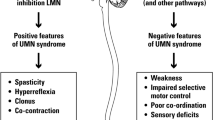Abstract
Purpose
To investigate and provide objective documentation of the possible differences in the axonal reinnervation process of facial muscles after hypoglossal-facial nerve anastomosis. Then, to search for the presence of the trigemino-hypoglossal reflex and determine whether it indicates better peripheral recovery.
Methods
Electrophysiological examination performed on 20 patients who had undergone VII–XII anastomosis, with follow-up periods of more than 2 years.
Results
The mean follow-up time after surgery was 4.1 ± 1.3 years (range 2–8 years). The degrees of axonal reinnervation for the orbicularis oculi (OOc) and orbicularis oris (OOr) were 46.91 ± 19.77 and 32.65 ± 14.85, respectively. And the difference between these muscles was statistically significant (p = 0.018) in favor of the OOc. In addition, R1 blink reflexes that were not followed by R2 components were observed in 30% of the patients. However, these 6 patients with short-latency potential did not differ from the others in terms of latency, the amplitude of compound muscle action potential (CMAP), and degree of axonal reinnervation (p > 0.05) at both muscles (OOc and OOr).
Conclusion
The recoveries of the lower face and upper face are different after VII–XII anastomosis, and in our patients the OOc healed better. In addition, R1 blink reflexes that were not followed by R2 components were observed in 30% of the patients. However, the patients with these blink reflexes did not have better peripheral healing in their neuromuscular units, which suggests that the blink reflex is not an indicator for peripheral recovery.

Similar content being viewed by others
References
Tanbouzi Husseini S, Kumar DV, De Donato G, Almutair T et al (2013) Facial reanimation after facial nerve injury using hypoglossal to facial nerve anastomosis: the gruppo otologico experience. Indian J Otolaryngol Head Neck Surg 65:305–308. https://doi.org/10.1007/s12070-011-0468-3
Coulson SE, Croxson GR, Adams RD, O'Dwyer NJ (2005) Reliability of the "Sydney," "Sunnybrook," and "House Brackmann" facial grading systems to assess voluntary movement and synkinesis after facial nerve paralysis. Otolaryngol Head Neck Surg 132:543–549. https://doi.org/10.1016/j.otohns.2005.01.027
Kleiss IJ, Beurskens CH, Stalmeier PF, Ingels KJ et al (2015) Quality of life assessment in facial palsy: validation of the Dutch Facial Clinimetric Evaluation Scale. Eur Arch Otorhinolaryngol 272:2055–2061. https://doi.org/10.1007/s00405-015-3508-x
Kondo K, Takeuchi N, Tojima H, Ito K et al (2007) +− Reconstruction of the intratemporal facial nerve using interposition nerve graft: time course of recovery in facial movement and electrophysiological findings. Acta Otolaryngol 127:85–90
Zhang L, Li D, Wan H, Hao S et al (2015) Hypoglossal–facial nerve ‘side’-to-side neurorrhaphy using a predegenerated nerve autograft for facial palsy after removal of acoustic tumours at the cerebellopontine angle. J Neurol Neurosurg Psychiatry 86:865–872
Willer JC, Lamas G, Poignonec S, Fligny I et al (1992) Redirection of the hypoglossal nerve to facial muscles alters central connectivity in human brainstem. Brain Res 594:301–306
Willer JC, Lamas G, Fligny I, Soudant J (1993) Hypoglossal-facial anastomosis alters excitability of hypoglossal motoneurones in man. Neurosci Lett 155:212–215
Lamas G, Poignonec S, Fligny I, Soudant J et al (1994) Central and peripheral rearrangements following hypoglossal-facial crossover: an electrophysiological study. The facial nerve. Springer, Berlin, pp 551–554
Danziger N, Chassande B, Lamas G, Fligny I et al (1995) Partial restoration of blink reflex function after spinal accessory-facial nerve anastomosis. J Neurol Neurosurg Psychiatry 58:222–226
Flasar J, Volk GF, Granitzka T, Geissler K et al (2017) Quantitative facial electromyography monitoring after hypoglossal-facial jump nerve suture. Laryngoscope Investig Otolaryngol 2:325–330. https://doi.org/10.1002/lio2.95
Krarup C, Boeckstyns M, Ibsen A, Moldovan M et al (2016) Remodeling of motor units after nerve regeneration studied by quantitative electromyography. Clin Neurophysiol 127:1675–1682
Yayla V, Öge AE (2008) Motor unit number estimation in facial paralysis. Muscle Nerve 38:1420–1428
Volk GF, Klingner C, Finkensieper M, Witte OW et al (2013) Prognostication of recovery time after acute peripheral facial palsy: a prospective cohort study. BMJ Open 3:e003007
Tankéré F, Bernat I, Vitte E, Lamas G et al (2003) Hypoglossal-facial nerve anastomosis: dynamic insight into the cross-innervation phenomenon. Neurology 61:693–695
Bernat I, Vitte E, Lamas G, Soudant J et al (2006) Related timing for peripheral and central plasticity in hypoglossal–facial nerve anastomosis. Muscle Nerve 33:334–341
Kindly provide complete details for the Ref. [16], and amend if necessary.
Hembd A, Nagarkar PA, Saba S, Wan D et al (2017) Facial nerve axonal analysis and anatomical localization in donor nerve: optimizing axonal load for cross-facial nerve grafting in facial reanimation. Plast Reconstr Surg 139:177–183. https://doi.org/10.1097/PRS.0000000000002897
Terzis JK, Wang W, Zhao Y (2009) Effect of axonal load on the functional and aesthetic outcomes of the cross-facial nerve graft procedure for facial reanimation. Plast Reconstr Surg 124:1499–1512. https://doi.org/10.1097/PRS.0b013e3181babb93
Roostaeian J, Rohrich RJ, Stuzin JM (2015) Anatomical considerations to prevent facial nerve injury. Plast Reconstr Surg 135:1318–1327
Montero J, Serra J, Montserrat L (1996) Axon reflexes or ephaptic responses simulating blink reflex R1 after XII-VII nerve anastomosis. Muscle Nerve 19:848–852
Bernat I, Vitte E, Lamas G, Soudant J et al (2006) Related timing for peripheral and central plasticity in hypoglossal-facial nerve anastomosis. Muscle Nerve 33:334–341. https://doi.org/10.1002/mus.20464
Acknowledgements
No specific acknowledgements.
Funding
The authors declare that they had no financial support to disclose.
Author information
Authors and Affiliations
Corresponding author
Ethics declarations
Conflict of interests
The authors declare that they have no conflict of interests to disclose.
Ethical standards
This material has never been published and is not currently under evaluation in any other peer-reviewed publication.
Ethical approval
Approved by the local ethics committee (Approval number: 493/2014).
Additional information
Publisher's Note
Springer Nature remains neutral with regard to jurisdictional claims in published maps and institutional affiliations.
Rights and permissions
About this article
Cite this article
Tutar, H., Eravcı, F.C., Mercan, M. et al. Long-term electrophysiological assessment after hypoglossal-facial anastomosis. Eur Arch Otorhinolaryngol 277, 2533–2538 (2020). https://doi.org/10.1007/s00405-020-05954-4
Received:
Accepted:
Published:
Issue Date:
DOI: https://doi.org/10.1007/s00405-020-05954-4




